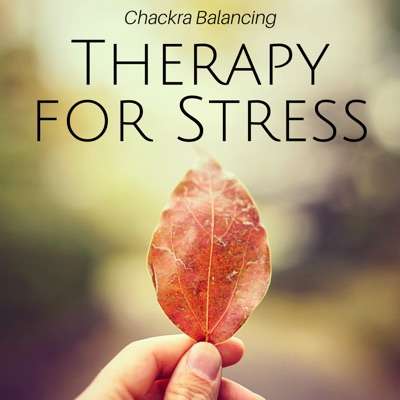So let’s talk about what causes Anxiety to spiral out of control-This is the Anxiety Cycle

(Experience) Every day throughout our day, we have experiences- and we interpret these experiences as either being safe or dangerous. (Perception) So lets say for example you see a a dog, now each person interprets an experience differently-for some people this would be exciting, and fun, but for some reason you think “That dog is going to bite me!” this leads to feelings of fear, anxiety and maybe even panic. These are uncomfortable feelings and you may even take them as a sign that your thoughts are true. (Reaction) So you escape, you run away, get out of there! (Outcome) And- nothing bad happens… (Reinforcement)Your brain releases a surge of relief, “whew, that was close! The only way I survived was because I ran away! I could have died!
Your brain thinks- “I better do that again! I’m going to motivate my human to avoid that situation by increasing their anxiety about it.” And voila…your anxiety goes up.
Every single time that we avoid a threat, and survive, our brain thinks- “Let’s do that again”. So it lays down neural pathways, this wiring, that reinforces that behavior. And the whole function of emotions is to motivates us to action. (But that’s a whole other video). So our brain, because we’ve convinced it that dog was a threat- takes action into it’s own hands and increases your anxiety level around dogs. Every time that we feel anxiety, then avoid the situation, our anxiety level will go up a notch.
This is Principle #3-This is Essential to understand to beat anxiety- Avoidance Feeds Disordered Anxiety– It literally creates overwhelming anxiety. It trains your brain to believe that things that are actually safe are really dangerous. This whole time you’ve been thinking that you need to get rid of anxiety, when it reality you need to get rid of avoidance.
Now there are lots of ways to avoid: there’s running away and physically avoiding, but there’s also emotional avoidance- if you have social anxiety you might still go to the party, but only if you get drunk ahead of time. Or you might be in a relationship, but scared of getting hurt so you don’t allow yourself to let the other person in. You stay emotionally distant or you protect yourself by not committing. Social Media, Anger, Blame, distraction, and even “Coping Skills” can be avoidant.
Regardless of the type of avoidance, it increases your anxiety and worse- it shrinks down your world. So with the Dog example, you might start avoiding situations where a dog might be present, not going to friends homes or the park. And your world shrinks, you miss out on good relationships, or stop going to parties. And your world gets more and more constrained. Avoidance can make your world small and scary and unhappy. But every time you get anxious and avoid something, and survive, your brain increases your anxiety in that area.
Now looking at this cycle, we have two places where we can intervene, where we can stop that anxiety from spiraling out of control. The first place is with our actions, when we feel anxiety but we are actually safe, if we stick with it, if we stay there, experience our emotions and sensations without running away. And again, you don’t die, then your brain learns “Phew, what a relief. I guess that not all dogs are dangerous! Let’s do that again!” and it sends out a surge of relief. This leads to a gradual decrease in anxiety over time, and a gradual increase in your emotional muscles- your ability to feel emotions and sensations that are uncomfortable without needing to escape them all the time. You get better at feeling.
As you do this your brain literally lays down new neural pathways saying “Not all dogs are dangerous. I don’t need to be anxious around dogs” and it literally changes your brain chemistry, releasing less cortisol and adrenaline and other stress hormones.
This is the most straightforward, way to re wire your brain to have less anxiety. But I get it. This is super hard-if it were easy, you would have already done it. So I’m going to break it down into 3 big steps for you.
Now on a side note- The second place in this cycle to intervene is with your thoughts, changing how you think about the dog, and this can be a powerful and effective treatment too- but it can also get really complicated, and it works best before you’re anxious rather than during. I talk about some ways you can change your thinking in other videos, but in this video we’re going to talk about the most straightforward way to rewire the anxious brain- through action.
OK, just so you know, I’ve been there in the past; I’ve had a couple of anxiety attacks. One of them was when I lived in Argentina. And I had been under a lot of stress overall, but everything seemed fine. I was just going about my day when all the sudden I started feeling shaky and sick.
I started to worry, “What’s the matter with me?” And then I started to feel shakier and sicker. Then I started to worry about how this was going to mess up my day. We had a lot of important appointments. What if I wasn’t going to be able to get to them because of how I was feeling?
Pretty soon I was sucked into waves of anxiety, and every wave was worse than the last. I was trying my best to make myself calm down, but everything I did made it worse. Eventually I had to call a friend over to help me. When he came over, we talked for a while, and he was gentle and comforting. I took a break and eventually calmed down, and when I did, all the nausea and sick feelings went away.
Turns out I wasn’t sick — it was all the stress, anxiety, and fear that was causing that sick feeling. But the harder I tried to make it go away, the worse it got.
This is one of the real paradoxes of emotions; there’s a lot we can do indirectly to change how we feel, a lot you can do to get feeling better overall in life, but if we try to stuff our emotions or force our emotions to change in the moment, we often make things worse in the long run.
This can be hard to see, because for many people, the only emotional skills they were taught were things like get over it or try to look on the bright side or relax or try not to think about it. Maybe as a child you were taught that it’s not ok to cry or to feel sad or angry, and to be honest, putting an emotion to the side for a while in order to complete an important task is a really helpful skill in the short term.
So, for example, think of a police officer who responds to help at a horrible car crash. They need to be able to focus and perform their task in the moment and push their emotions to the side for a moment. That’s an effective short-term strategy, but if that’s their only strategy, then over time those emotions are going to build and build.
Many police officers are really good at suppressing their emotions, but when they do this, in the long run, it can lead to higher rates of alcoholism, divorce, and suicide. Emotional suppression isn’t an effective long-term strategy because emotions beg to be processed and resolved, and they do this by popping up over and over again. Most people have simply not been taught other ways to work through emotions.
For that officer, he or she would need to add the skill of processing through the emotions later so those suppressed feelings of stress and anxiety can get resolved.
When the uncomfortable symptoms of anxiety feel like too much, one of the simplest ways to feel better is avoidance. This means avoiding the source of anxiety, or numbing the uncomfortable feelings. The good news is, avoidance works… for a little bit. The bad news is, the relief that avoidance brings is temporary, and the anxiety tends to come back worse than before.
The cycle of anxiety is a process where a person avoids their fears, and as a result, those fears grow increasingly powerful. Avoidance becomes increasingly difficult to resist, and the anxiety continues to grow worse. Many anxiety treatments work by breaking this cycle. They focus on facing fears, rather than avoiding them.
In this video, the cycle of anxiety is broken down and explained step-by-step, by Woody Schuldt, a mental health counselor.
Now, panic attacks suck. I’ve had a couple in my life, and they’re scary, and they make you feel sick. They get in the way of your life and your work and your friends.
But there is a straightforward process to stop recurring panic attacks. As Nick Wignall says, once you understand what panic really is and how it works, it’s possible to completely free yourself from it. So let’s talk about what leads to panic attacks so we can understand how to stop them.
Okay, so back to Steve. How did he get here?
Steve grew up with an abusive father and an enabling mother. His parents fought all the time but especially when dad was drunk. Little Steve grew up in fear.
When he was around five, he heard his parents fighting, and things were getting rough. Things were getting thrown, and he could hear screaming and smashing and breaking. He hid under his bed crying and just wondering if his mother would be killed.
Another time he was playing outside barefoot and stepped on a nail, and it went all the way through his foot. He screamed for help, and he hobbled inside, and his dad yelled at him, “Shut up. Stop crying or I’ll give you something to cry about.”
Needless to say, he grew up in a home where fear was abundant, and it was also unacceptable to have emotions. If you were sad you’d be called a wuss. If you were scared you’d be called a little girl, which is the worst kind of insult for a tough little boy. In his home he would be punished for basically feeling any kind of emotion.
So Steve learned to be tough to hide what he was feeling, to cover it up with anger, to avoid people and just get over it. And that worked for him. Kinda. He held down jobs, mostly. Well, sometimes. He went through a couple of divorces, and he worked hard, and he did all right. He was a good man who tried to serve in his church and help his neighbors and work hard.
But later in life a few things changed. He met and married a sweet woman who was empathetic and understanding. Then he went through some serious medical issues that left him very sick for a few years. Finally, his health returned, but something about him was more tender.
The difficult experiences he had gone through had deepened his emotional sensitivity, and perhaps some medical changes also impacted him. He could no longer keep his emotions buried inside. And the more he felt, the more scared he got.
You see, Steve had learned as a child that emotions were dangerous; they meant you were weak or that you’d be shamed or punished for having them. And so emotions were scary.
It was scary to care for his sweet wife because he had lost other relationships in the past. It was scary to feel anxiety because he’d been punished for that in the past. It was scary to feel happy because that might lead to disappointment.


